- Blog
- 16 Value Proposition Examples & Tips to Write Your Own Value Propositions
16 Value Proposition Examples & Tips to Write Your Own Value Propositions
-
Nikolett Lorincz
- Marketing
- 6 min read
Table of Contents
”Why should I buy from your store?”
The quicker you can answer this question on behalf of your customers, the better.
Keep in mind that buyers today are absolutely overwhelmed with choices. In fact, around 50% of consumers have abandoned a purchasing decision because they couldn’t find the right product.
For ecommerce brands facing more and more competition, it’s crucial to highlight why your product is a good fit, as soon as someone lands on your site.
That’s exactly where your value proposition comes into play.
In this guide, we’ll break down some effective value proposition examples from top brands, and give you tips for writing your own value proposition.
Let’s jump in!
What is a value proposition?
Let’s kick things off with a quick workable definition of value proposition…
A value proposition is a positioning statement that highlights why somebody should buy from your business. It also explains what benefits they should expect once they become a customer. Most value propositions can be condensed into one sentence or a tagline and should be easy to understand for people who are completely new to your brand.
The term value proposition is often used interchangeably with the coined phrase: unique selling proposition.
The key difference is that a unique selling proposition focuses on what makes you different, while your value proposition highlights what you bring to the table for your customers.
In other words, what are the benefits and bonuses of doing business with you? What customer pain points do you relieve? How do you make your customers’ lives easier or better?
Below is a prime example of an effective value proposition from Canva.
The company’s tagline (“Design anything. Publish anywhere.”) speaks to their target audience that might be new to graphic design or intimidated by using more professional tools.
Meanwhile, Canva clearly spells out how their product is easy to use (“drag and drop,” “free”) and assists users in achieving a specific goal (“design consistently stunning graphics”).
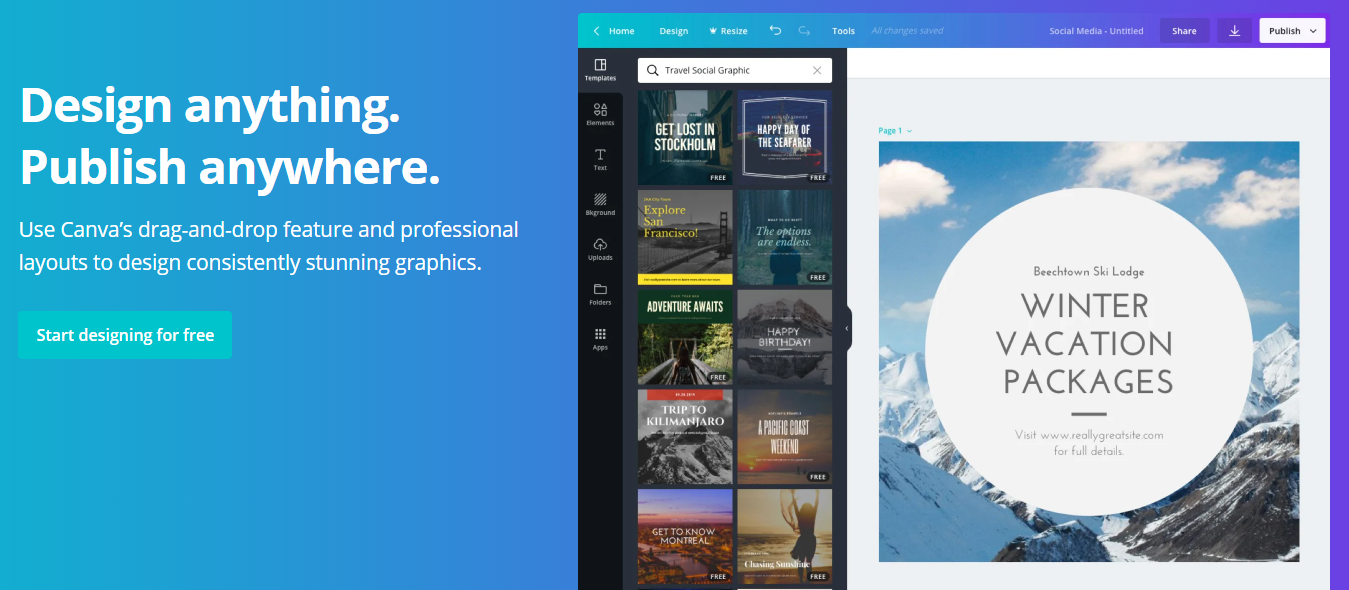
See how that works?
Value props also help brands solidify their identities and serve as powerful marketing messages by themselves.
When done right, they can compel visitors to make a purchase with just a few words.
A value proposition can usually be found in various locations, including but not limited to homepages, product descriptions, and Facebook ads.
How does a great value proposition help your business grow?
Each business has a value proposition and taking the time to analyze yours is worth the effort.
Let’s take a look at some of the positive outcomes of having a good value proposition.
1. Uncover your most important selling point
Putting together a value proposition requires you to put your business under the microscope.
Specifically, you have to know what sets you apart from the competition and how you can leave a lasting impression on customers by identifying and articulating your own value prop.
Maybe you provide unparalleled service. Perhaps your product is built to last for life. Either way, this brainstorming process can help you uncover your business’ hidden gems.
2. Tweak your marketing messages
In short, your value prop can be your best marketing firepower.
Take Canva’s “Design anything. Publish anywhere.” slogan, for example. Not only is the value proposition statement catchy, but it also fully captures the brand’s target audience and their products’ ease of use.
Consider also how many companies promote themselves as “hassle-free,” “budget-friendly,” or “speedy.”
These aren’t just buzzwords: they’re brilliant phrases to sprinkle throughout your marketing campaigns and marketing materials based on your value proposition. Such campaigns might include:
- Social media posts
- Emails
- Ads
- Landing pages
- Calls-to-action
And again, your value proposition is also central to how you position yourself compared to your competitors.
3. Make meaningful changes to your products or services
Defining your value proposition might also encourage you to make significant changes to your products or services as your business evolves.
For example, a company with a successful value proposition which is centered around being budget-friendly, might introduce flexible payments or lower-cost products (or service tiers) to meet the needs of their audience.
What are some good value proposition examples?
Businesses have plenty of creative freedom when it comes to showcasing the value they provide for customers.
Below are some great value proposition examples grouped by the different types of propositions that you should be familiar with.
4 customer value proposition examples
Customer value propositions speak directly to target customers.
The concept here is simple: spell out the value of what you’re selling in a sentence or two.
For instance, Haus hypes up their high-quality alcohol subscription service as “something better’‘ with their unique flavors and natural ingredients.
Meanwhile, they eliminate the headache of choosing between a million different drink options by offering only a handful of flavors and delivering them directly to customers’ doorsteps, enhancing the customer’s life with convenience and quality.

The unique value proposition below from Skillcrush brilliantly shows how to highlight the benefits of your product or service.
Their landing page copy (“Code your way to a more fulfilling & higher paying career in tech”) does a brilliant job of explaining how Skillcrush helps their users by relieving a specific pain point.
In this case, being stuck in an unfulfilling or low-paying job.

Below is a straightforward value proposition from Red Wing Shoes.
“Better With Age” is a simple and to-the-point tagline, signaling the longevity of the company’s products.
Highlighting their boots’ high-quality leather and the fact that they’ve been in business since 1905, this is a great example of how a value proposition can be used to tell a compelling story.

Here’s another example from Birchbox, a beauty subscription service.
They recognize that their target customers, who are often busy individuals, do not have the time to extensively search for beauty products they will love. Therefore, Birchbox’s value proposition revolves around simplifying the process for their customers.
Instead of wasting time on finding personalized beauty products, Birchbox personalizes the selection for their customers, delivering products that align with their preferences and saving them valuable time.
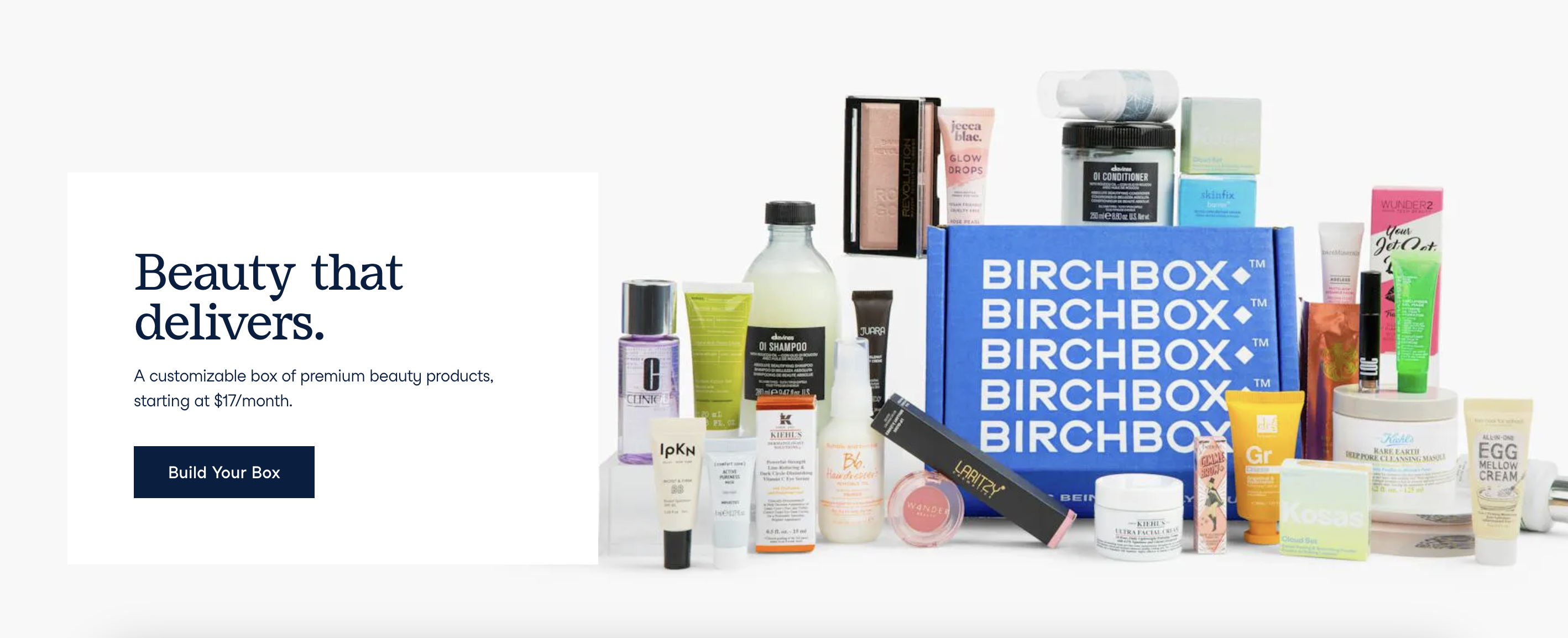
2 employee value proposition examples
Employee value propositions are statements that companies use for the sake of hiring.
The goal of these value propositions is to attract the best talent possible. They convey a strong statement of value and respect by putting the key benefits of becoming an employee front and center.
Craft compelling employee value propositions for effective talent acquisition, leveraging innovative tools to streamline and optimize the hiring process for attracting top-tier talent.
For example, HubSpot is very adamant about helping employees grow both personally and professionally.

Meanwhile, Dropbox’s strong value proposition emphasizes giving their workers control over their lives to promote a more “enlightened” way of working.
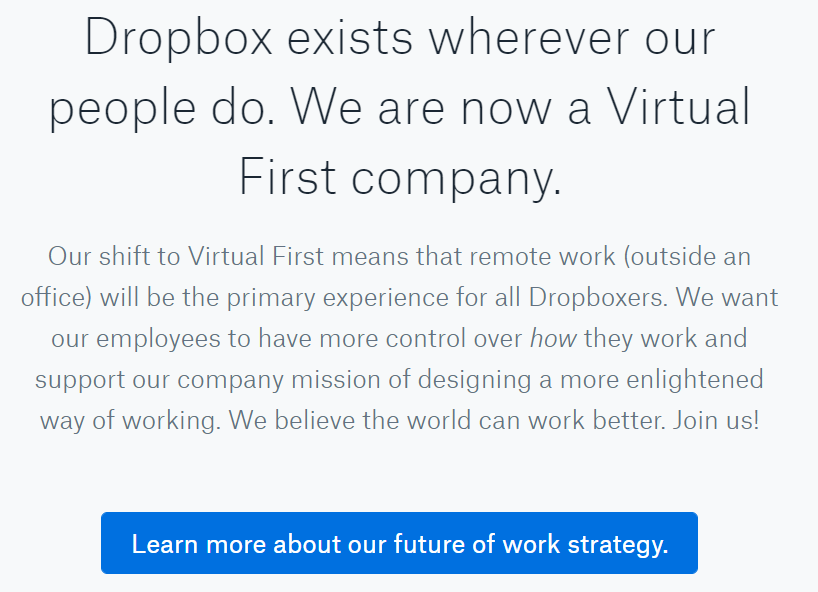
2 B2B value proposition examples
Recent research from Gartner notes that, much like traditional consumers, Business-to-Business (B2B) buyers are often overwhelmed when researching products.
Again, a clear and compelling value prop can help clear up confusion and indecision.
What separates the B2B value propositions from those of B2C (Business-to-Consumer) is that not only are you tasked with explaining the value of your product to your audience (hint: businesses), but also those business customers.
It’s almost like you’re selling to two different audiences at once.
This value proposition example from Zoho CRM does a great job at this, though.
Notice how their landing page does double duty of promoting the power of their product: building better customer relationships and managing them.
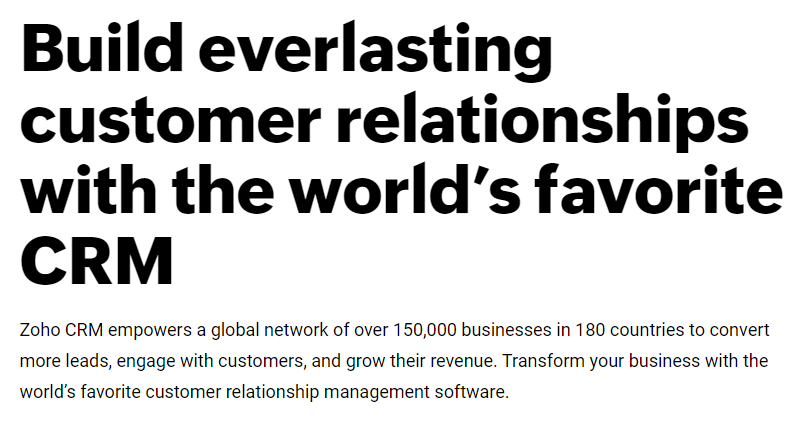
Ease-of-use is popular within many B2B value propositions—as highlighted by Bluehost.
The ability to “build your website without breaking a sweat” speaks directly to business owners who’ve been burned by more complicated solutions in the past.

3 steps to writing your own value proposition
We get it: coming up with your company’s value proposition statement might seem daunting.
If you have no idea where to start, consider these three steps to get the creative juices flowing (followed by more good examples to further guide and inspire you).
1. Brainstorm what sets your business apart from the crowd
As noted earlier, every ecommerce niche is crowded. Standing apart from the competition to communicate your unique value might seem easier said than done.
However, there are plenty of tried-and-tested characteristics of any given business that can be used to define your value proposition. Let’s look at them one by one.
Price point: For example, do you think of yourself as a luxury brand or a budget-friendly brand?
If you’re the latter, a sample value proposition might include phrases like “affordable” or “low-cost,” perhaps even providing a specific dollar amount that your customers can spend or save (see below).
Since the desire to save money is such a universal pain point, it’s no secret why it’s central to so many business value propositions.
Familiar with Smile Direct Club? We thought so! They’re very popular.
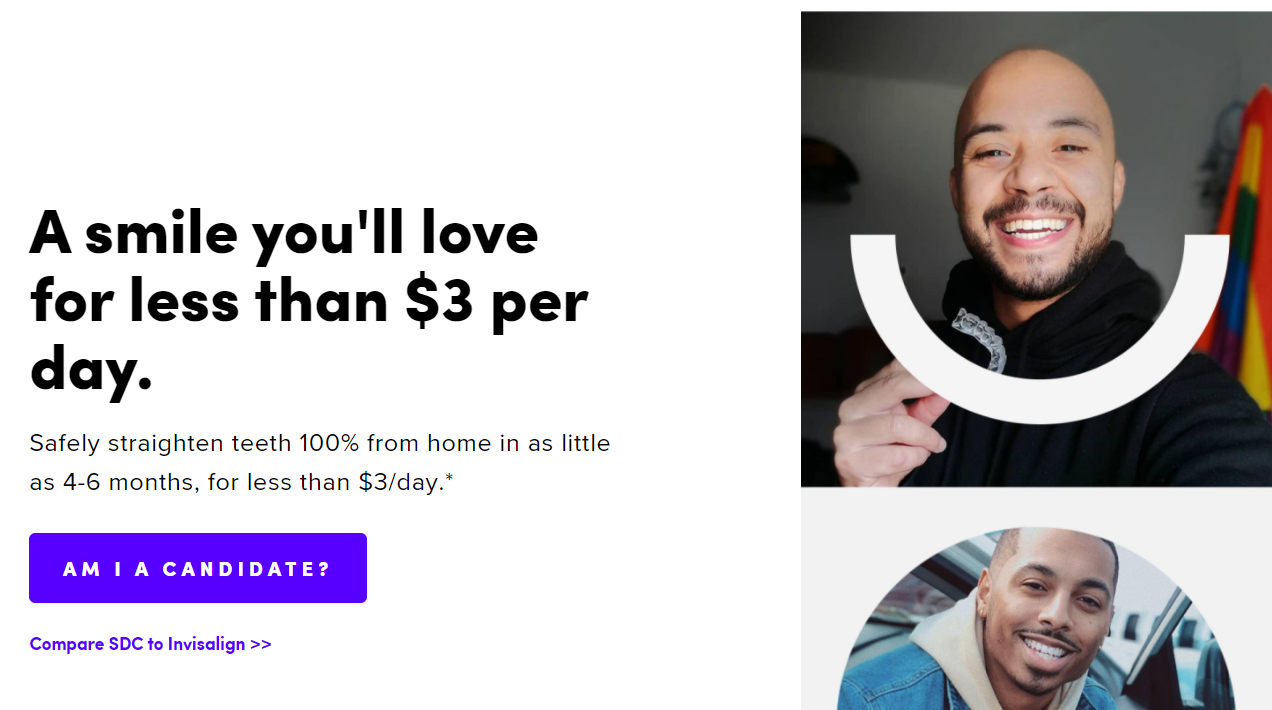
Ease-of-use: Promoting your product like Zapier does—as simple, straightforward, and hassle-free is particularly compelling to modern customers who are overwhelmed:
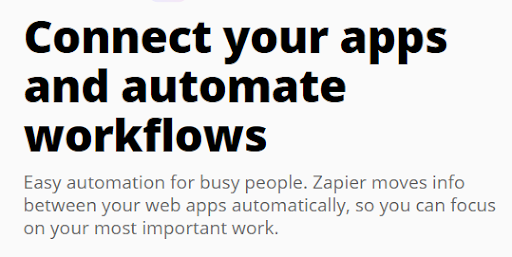
Style: Crucial among fashion and retail brands, selling something with a signature style or aesthetic is a surefire way to stand out.
Prana nails it.

Quality: Promoting high-quality ingredients or materials establishes that your product goes above and beyond what’s considered “the norm.”
Take Billie Cosmetics’ approach:
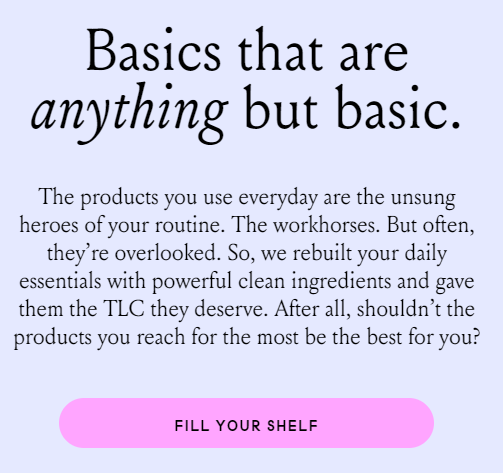
Customer service: Like with Chewy below, personal, attentive customer care can be a selling point in and of itself.
Having top-tier customer care showcases your empathy and commitment to your audience.
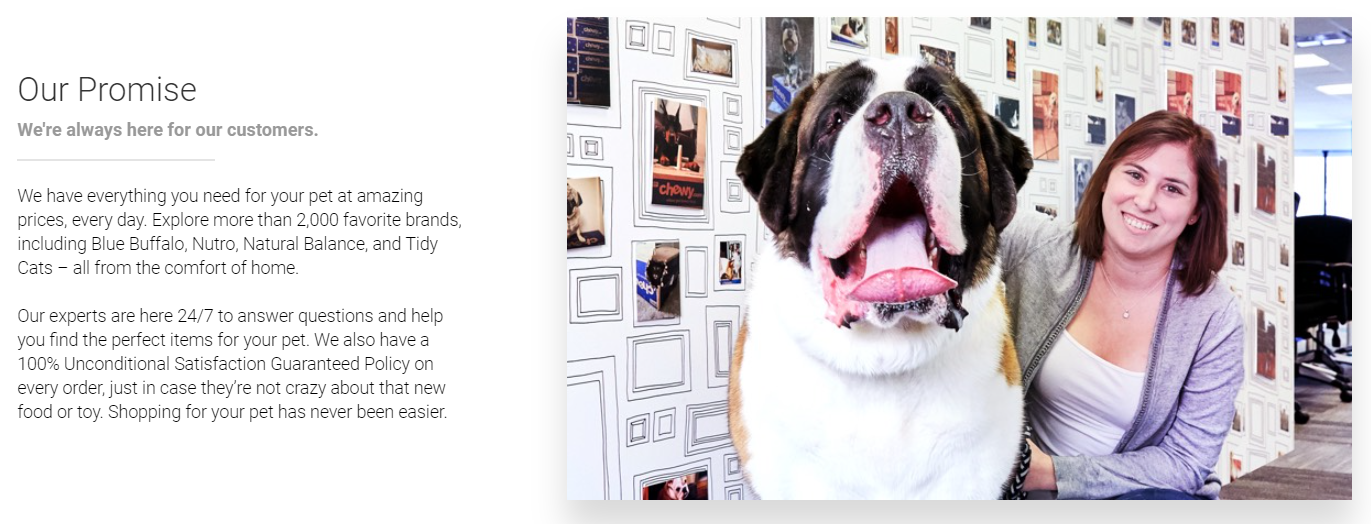
Security, durability, and/or longevity: When shopping online, people need to be reassured that they’re purchasing from a reliable brand.
For example, companies like Monos are known for their own confidence in their products’ quality (including a lifetime warranty and being crowned “the Apple of suitcases”).
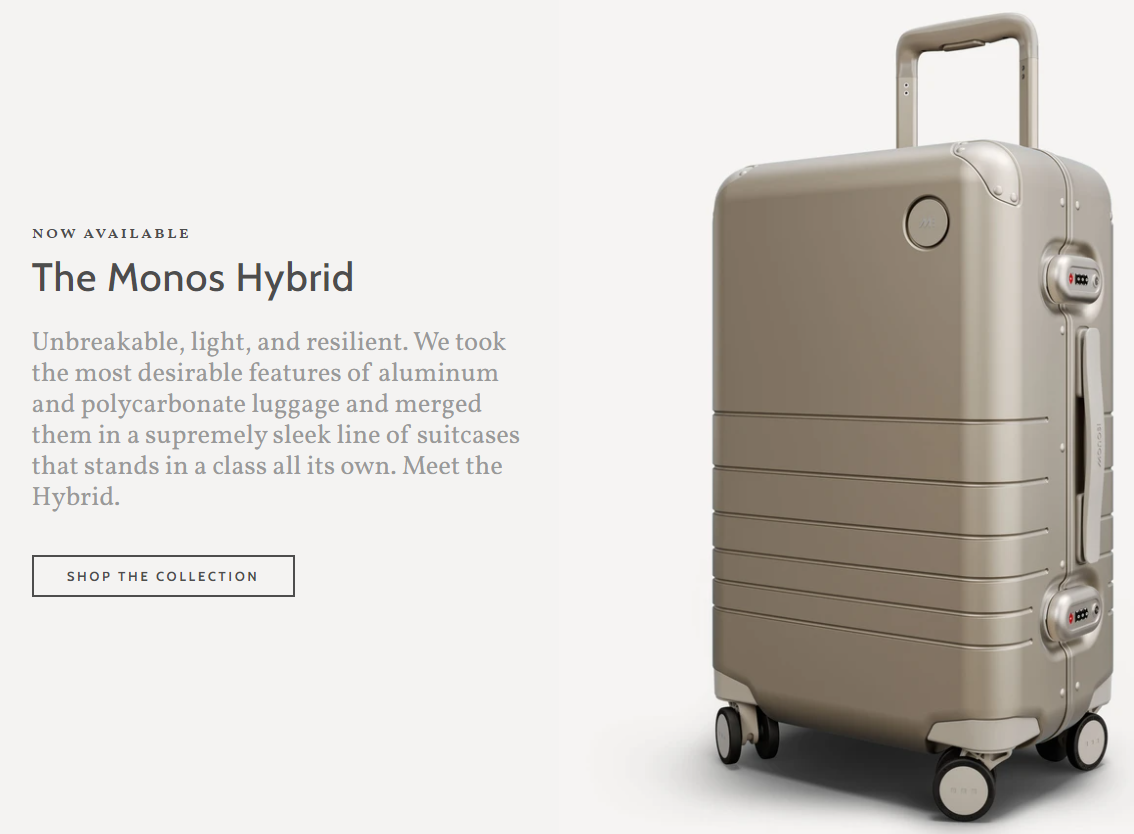
Sustainability: In recent years, a commitment to sustainability has become the cornerstone of so many brands.
In just about every niche, there are multiple companies committed to environmental concerns—and that’s no accident.
Companies like Patagonia make it clear on-site—that they’re energy-efficient and support environmental initiatives.
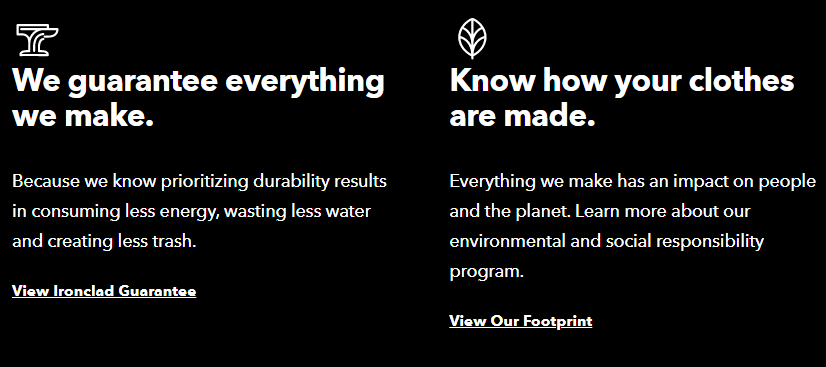
Based on the factors above, you can better understand how you can position yourself to potential customers.
2. Dig into your customer data and personas
Your existing customers are a goldmine of insight when it comes to your value proposition.
Some food for thought: How about popular keyword terms and search queries that highlight the needs of your audience and how people are already finding you?
If your Google Analytics picks up phrases like “affordable [product keyword],” “[competitor] alternatives,” or “longest-lasting [product keyword],” you can hone in on a value proposition that you know will make sense.
This is a win-win for both you and new people—as far as both search and find 😉.
You can also collect feedback from both visitors and customers alike to determine what they’re looking for in a business and why they might choose you versus a competitor.
Beyond hard data, think about who your ideal customer is. Then ask yourself:
- What are your ideal customers’ biggest pain points?
- What outcomes do your customers want?
- What does your product (or service) do to address #1 and #2?
With a bit of creative input and fine-tuning, the answers to these questions may very well be the foundation of your value proposition.
3. Look at your value proposition versus your competitors’
To wrap things up, note that your value proposition needs to be unique.
This might seem like a no-brainer, but failing to come up with a one-of-a-kind proposition could hurt your business. You probably don’t want to copy your competitors’ marketing messages or repeat the same talking points your audience has heard before.
For starters, make a list of your closest competitors and understand what their value propositions are. Doing this will ensure that you don’t unconsciously borrow their proposition or come up with something too similar.
To recap, these are the three key elements of the best value propositions that customers will remember:
- Easy to understand at a glance (simple language)
- Short and to-the-point (a sentence or two will do)
- Highlights your brand voice and personality (written by someone who understands their audience).
Take a peek at just about any of the value proposition examples above and you’ll see what we’re talking about.
In short, a unique value proposition is truly original and addresses the actual needs of your audience.
What is the Value Proposition Canvas?
The Value Proposition Canvas is a powerful tool designed to help businesses zero in on their customers’ needs and tailor their products or services accordingly. Developed by Alexander Osterwalder, this framework is an extension of the Business Model Canvas and is specifically focused on creating a strong alignment between what your business offers and what your customers truly want.
At its core, the Value Proposition Canvas consists of two main components: the customer profile and the value map. Together, these elements provide a comprehensive view of how your business can create real value for your customers.
1. Customer profile
The customer profile is all about understanding your target audience in depth. It breaks down into three essential parts:
- Jobs to be done: These are the tasks your customers are trying to accomplish in their personal or professional lives. Understanding these jobs helps you grasp the context in which your product or service will be used.
- Pains: These are the challenges, obstacles, or negative experiences that your customers encounter while trying to complete their jobs. Identifying these pains is crucial for positioning your product as a solution.
- Gains: These are the positive outcomes or benefits that your customers seek. Gains could range from functional benefits (like saving time or money) to emotional rewards (like feeling secure or happy).
2. Value map
The value map is where you outline how your product or service addresses the customer profile you’ve developed. It also consists of three key parts:
- Products and services: These are the offerings your business provides. It’s important to list not just the primary product but also any ancillary services or features that enhance its value.
- Pain relievers: These are the specific ways in which your product or service alleviates the customer pains you’ve identified. This might include faster service, better quality, or innovative features that solve a problem in a unique way.
- Gain creators: These are the elements of your offering that provide the customer with the gains they seek. This could involve delivering superior performance, offering exceptional customer support, or providing a delightful user experience.
The magic of the Value Proposition Canvas happens when you achieve a strong “fit” between the customer profile and the value map. This fit occurs when your product or service perfectly matches the jobs, pains, and gains of your customers.
When there is alignment, your value proposition resonates deeply with your audience, making it a powerful driver of customer acquisition and loyalty.
FAQ
How can I create a compelling value proposition?
To create a compelling value proposition, you need to understand your target customers’ needs and desires, identify what makes your offering unique, and clearly communicate the benefits it provides. Focus on solving a specific problem or fulfilling a particular need for your customers.
Can a value proposition evolve over time?
Yes, a value proposition can evolve as your business grows, your target market changes or market conditions shift. It’s important to regularly review and refine your value proposition to ensure it remains relevant and compelling to your customers.
What is Nike’s value proposition?
Nike’s value proposition revolves around inspiring athletes worldwide with innovative products that enhance performance and style. Their focus on cutting-edge technology, quality craftsmanship, and a commitment to athletic excellence resonates with customers who seek top-tier sports apparel, footwear, and equipment.
What is Apple’s value proposition?
Apple’s value proposition centers on delivering user-friendly, innovative technology that seamlessly integrates into consumers’ lives. Their products, such as iPhones, iPads, and MacBooks, are known for their sleek design, intuitive interfaces, and ecosystem compatibility, offering customers a seamless and enjoyable user experience.
What is the value proposition of Coca-Cola?
Coca-Cola’s value proposition emphasizes refreshing and uplifting experiences through its iconic beverages. With a focus on quality ingredients, taste consistency, and global accessibility, Coca-Cola promises to quench thirst and bring moments of happiness to consumers worldwide, making it a beloved choice for refreshment.
Wrapping up
Figuring out the right value proposition for your business is a cornerstone of an effective marketing strategy and long-term business success.
Hopefully, these examples provided some much-needed inspiration to write a value proposition for yourself. Keep in mind that the process doesn’t end with brainstorming – you should test your value proposition to discover what truly resonates with your target customer.
Once you’ve identified your winning value proposition, ensure it takes center stage across all touchpoints – from your website’s landing pages to your email campaigns.
Migration has never been easier
We made switching a no-brainer with our free, white-glove onboarding service so you can get started in the blink of an eye.

What should you do next?
Thanks for reading till the end. Here are 4 ways we can help you grow your business:
Boost conversions with proven use cases
Explore our Use Case Library, filled with actionable personalization examples and step-by-step guides to unlock your website's full potential. Check out Use Case Library
Create a free OptiMonk account
Create a free OptiMonk account and easily get started with popups and conversion rate optimization. Get OptiMonk free
Get advice from a CRO expert
Schedule a personalized discovery call with one of our experts to explore how OptiMonk can help you grow your business. Book a demo
Join our weekly newsletter
Real CRO insights & marketing tips. No fluff. Straight to your inbox. Subscribe now
Nikolett Lorincz
- Posted in
- Marketing
Partner with us
- © OptiMonk. All rights reserved!
- Terms of Use
- Privacy Policy
- Cookie Policy
Product updates: January Release 2025








